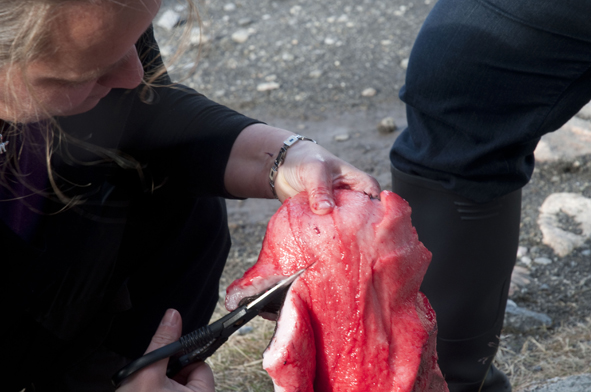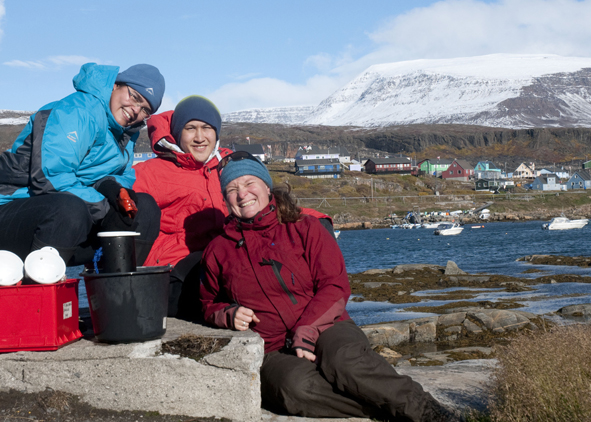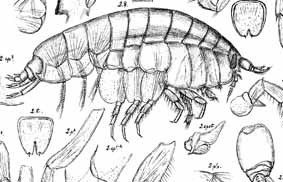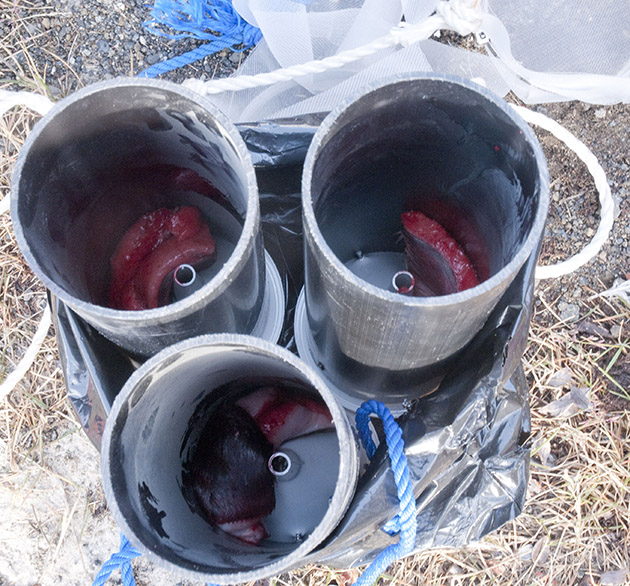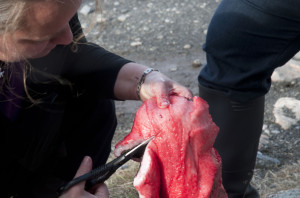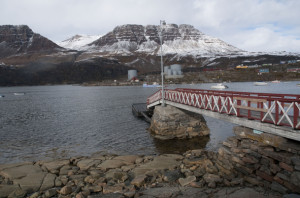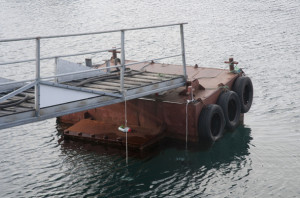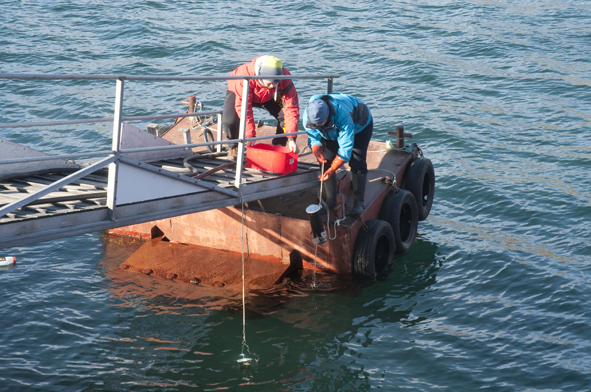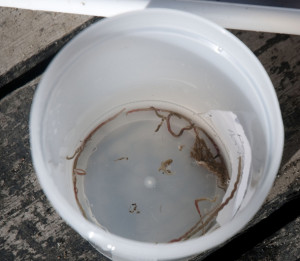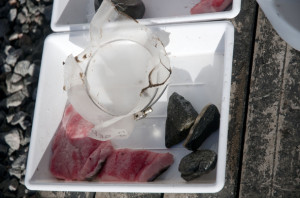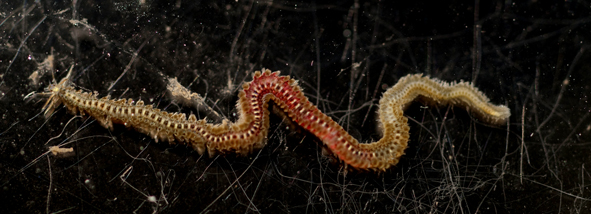Saturday 14th of September, a day with a handful of events throughout history: Stephen V ends his reign as Catholic pope (891), The Netherlands and England sign a peace treaty (1662) and Walt Disney gets the Medal of Freedom at the White House (1964) to mention a few. Moving towards present day and we find scientist and researcher Anne Helene setting up her traps on an experiment to catch amphipods at the local harbor in Qeqertarsuaq, Greenland.
With a warming sun and clear sky in the back she is assisted by enthusiastic students Henning and Daniela heading towards the chosen localities for the traps. To understand this experiment a little better we need to go back in time to the happy 90’s.
In 1990 Yves Scailteur and Claude De Broyer examined feeding in amphipods at the Arctic Station, Greenland from July 25th to August 18th. In one of the experiments traps were laid between 80 and 180m depth to catch the temperature and light sensitive amphipod Anonyx makarovi, in another experiment they examined the scavenging amphipods that were present at shallower depths.
23 years later scientist Anne Helene decided to set up a similar experiment to study scavenging amphipods. She made three homemade amphipod traps consisting of plumber tubes, plankton net, horse clamps and funnels and the result looked like this.
So on a sunny Saturday afternoon Anne Helene, Daniela and Henning set out to place these infamous traps to gather some amphipods for further examination. For bait the traps were fitted with fresh seal blubber straight from the fish market and a nice good chunk was put in to keep the amphipods well fed. There were chosen two localities for the experiment, the royal dock (actually just a floating dock with a bridge) by the museum of Qeqertarsuaq and at the harbor next to the research vessels docking point. The traps were hung with a solid rope roughly 2m down into the water with different colors to differentiate the two locations when collected; blue rope would indicate the dock and white would be the harbor.
Site 1: “The Royal Dock” Site2: The harbor.
After 24 hours of exposure in the different sites, on a windy Sunday afternoon the three characters went to collect the traps, and to their relief they were still there! The traps were collected and on their way back to the Arctic Station they spotted a sunken ship, sledge dogs and friendly people greeting us as we passed by.
So what was the outcome? Not a single amphipod…. Why? They really don’t know. It could be a number of factors from leaving them for a too short amount of time to feeding the scavenging munchkins something other than delicious seal fat. But wait! The traps weren’t completely empty! There were a couple of polychaetes (Phyllodoce maculata) gathered around in one of them that seemed to be fascinated by the blubber and the blood. And even if the plan wasn’t to catch polychaetes, a failed attempt doesn’t have to mean that the findings don’t matter. In science we don’t discriminate!
The sampling result: a bucket of worms Empty seal blubber pieces and clean net
Written by: Henning (University of Bergen) and the girls (Daniela (Gothenburg University) and Anne Helene (Institute of Marine Research))

